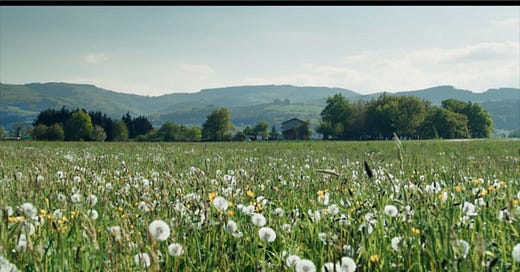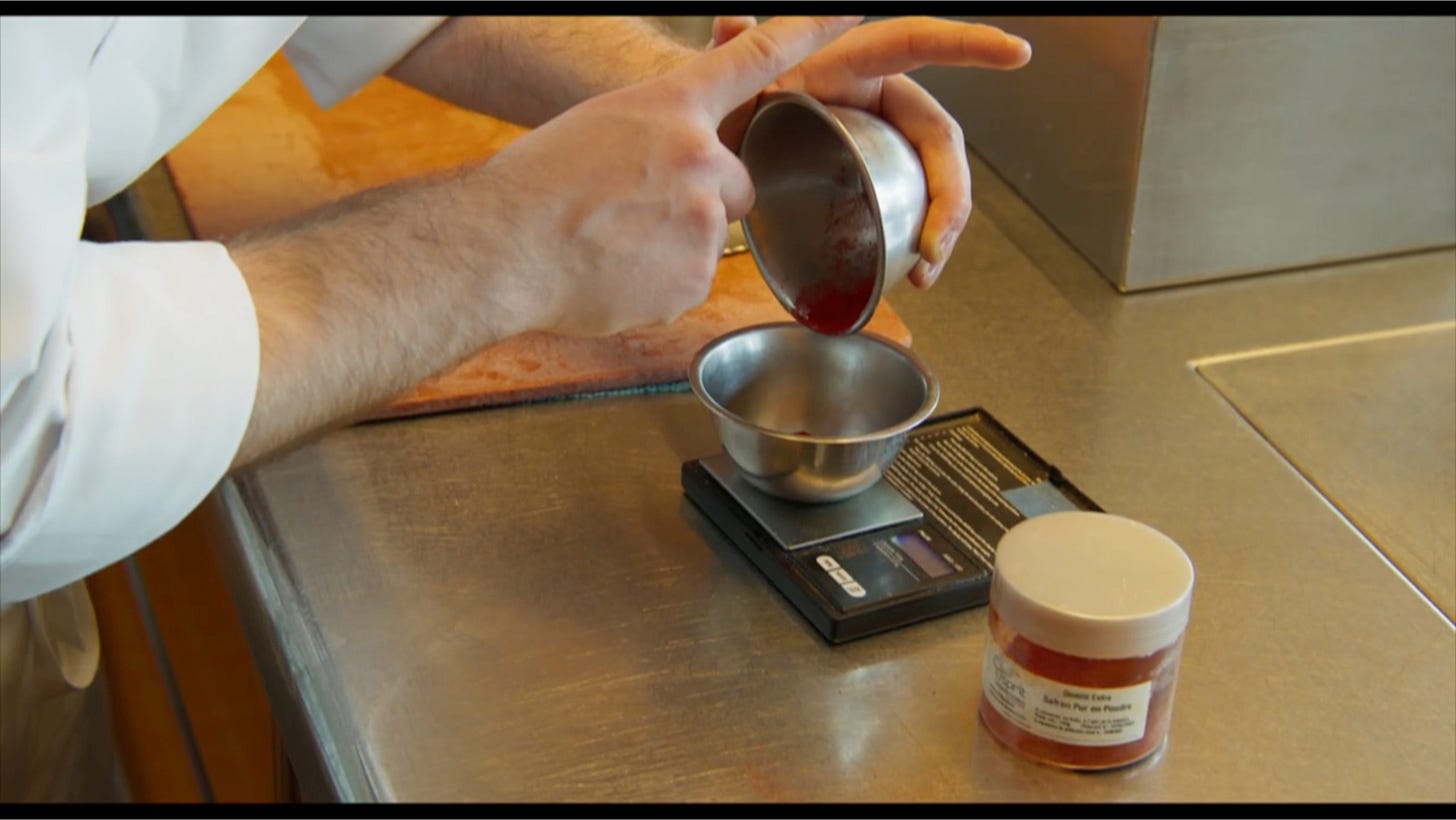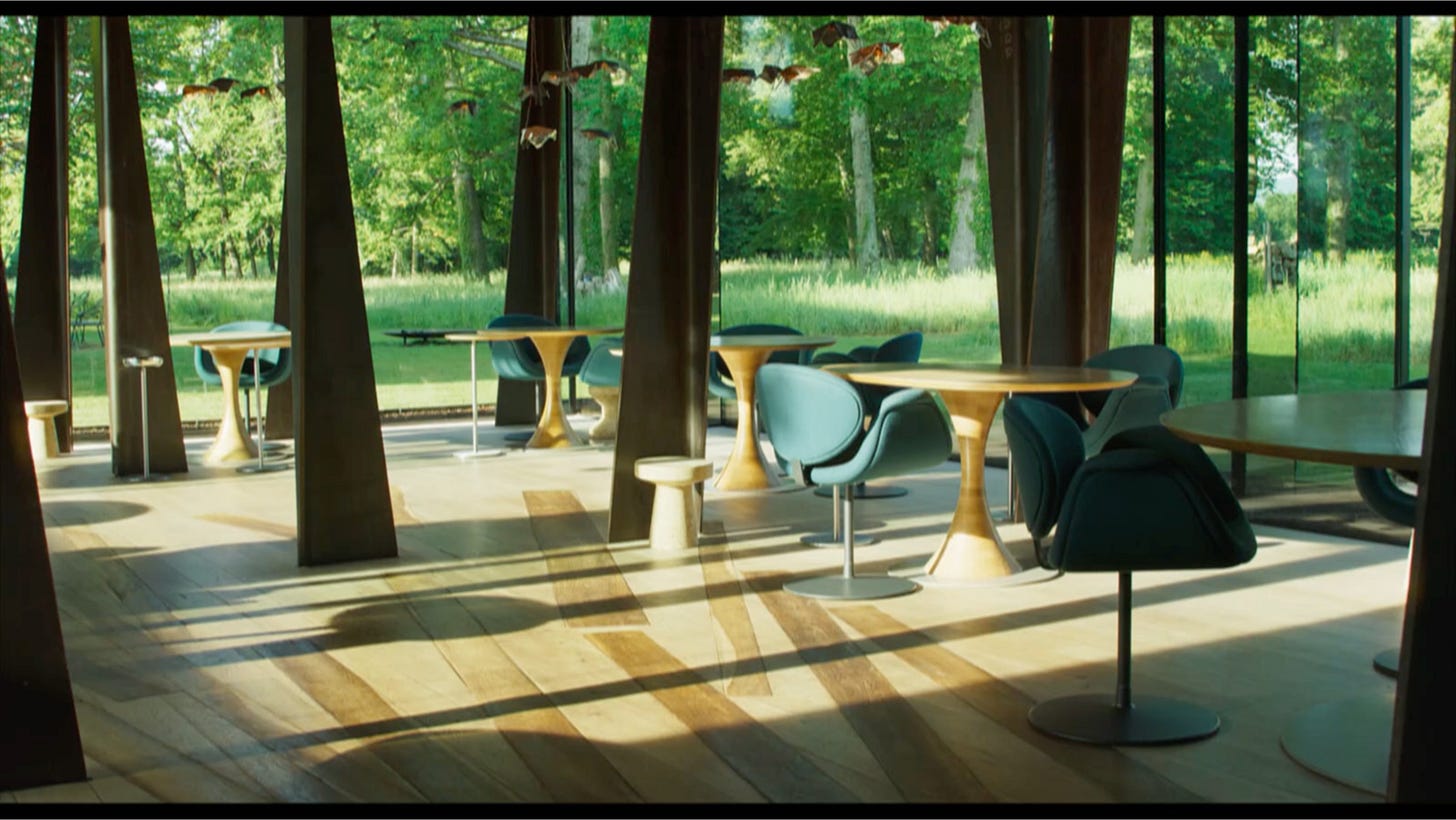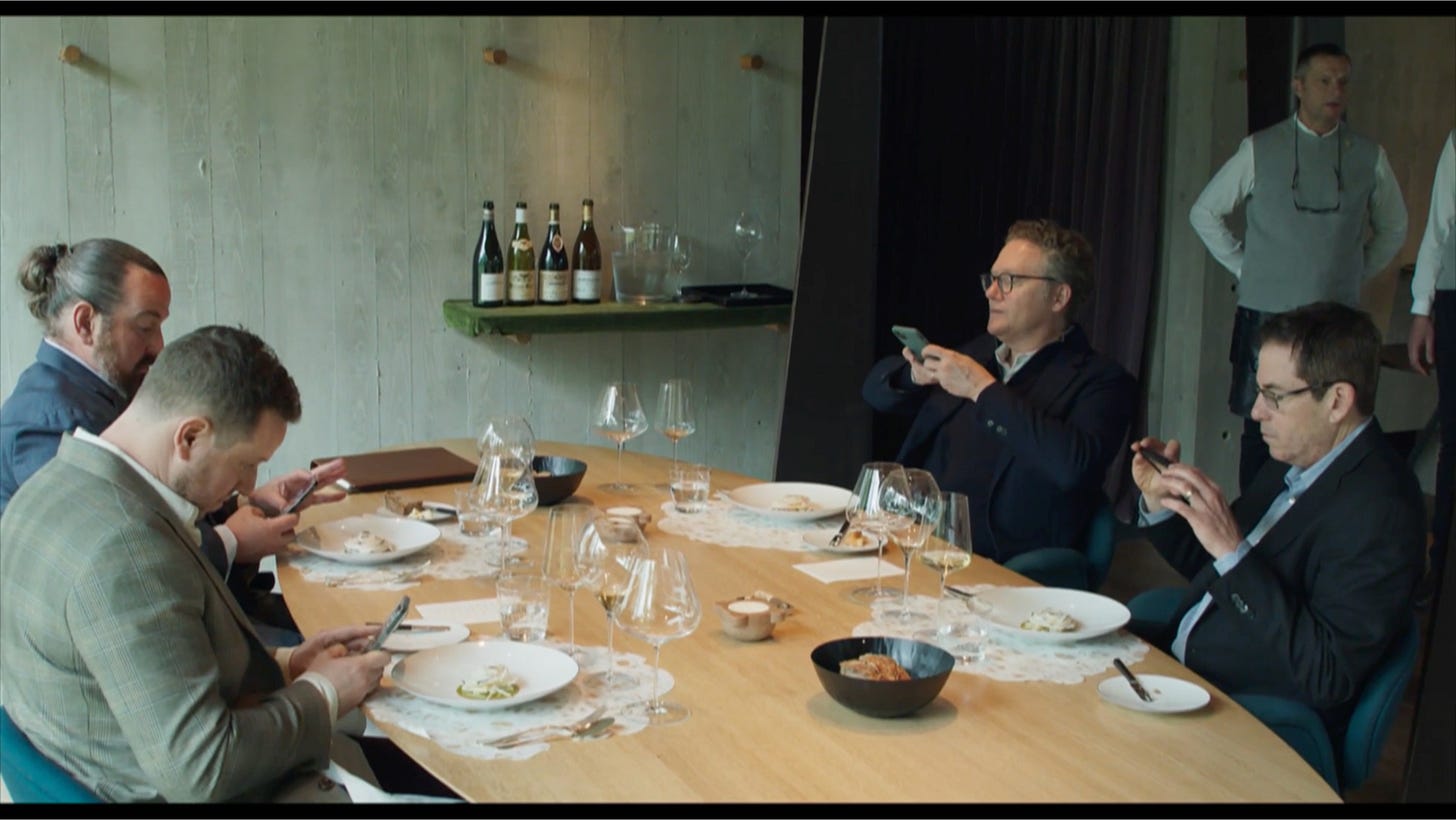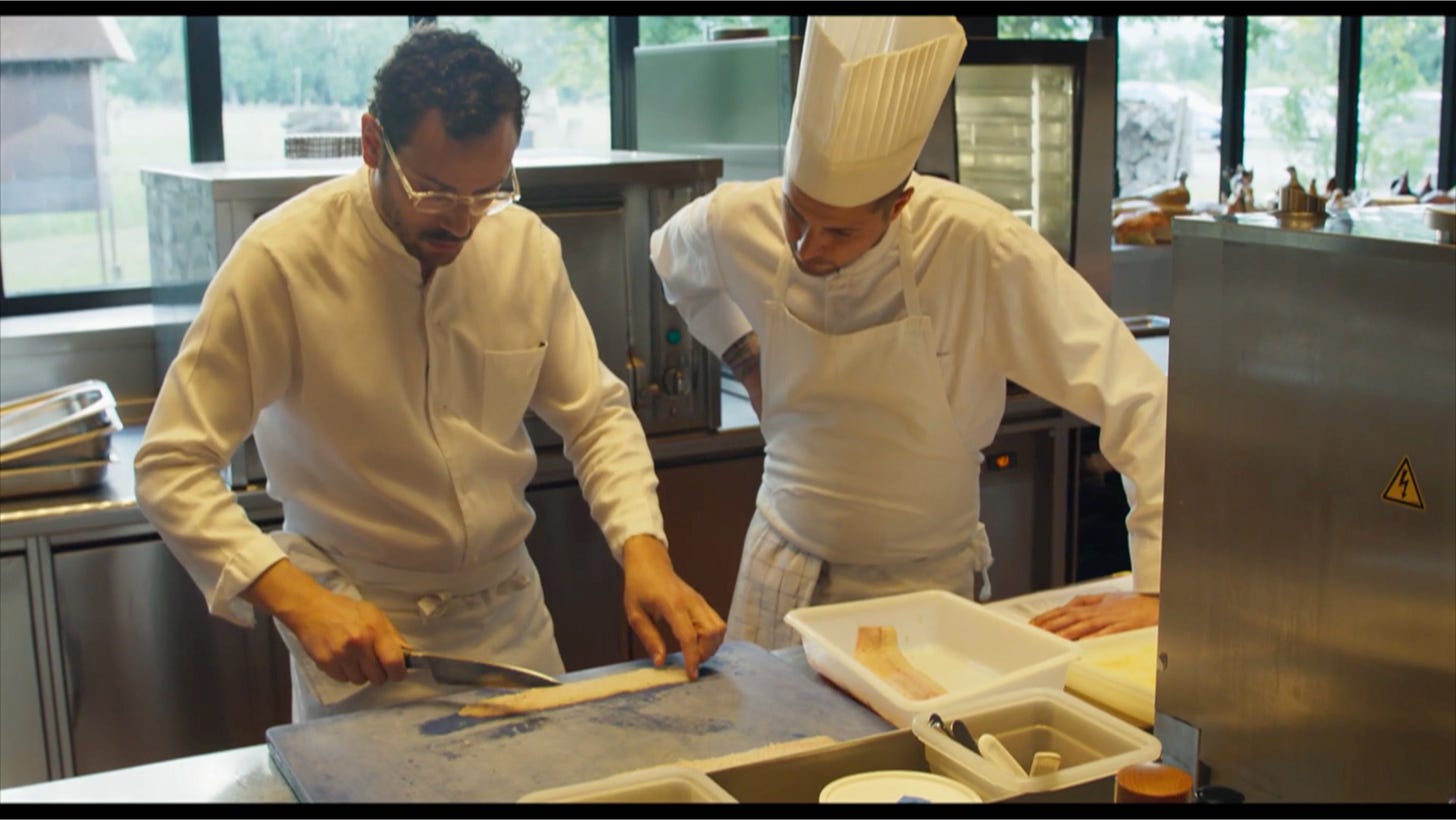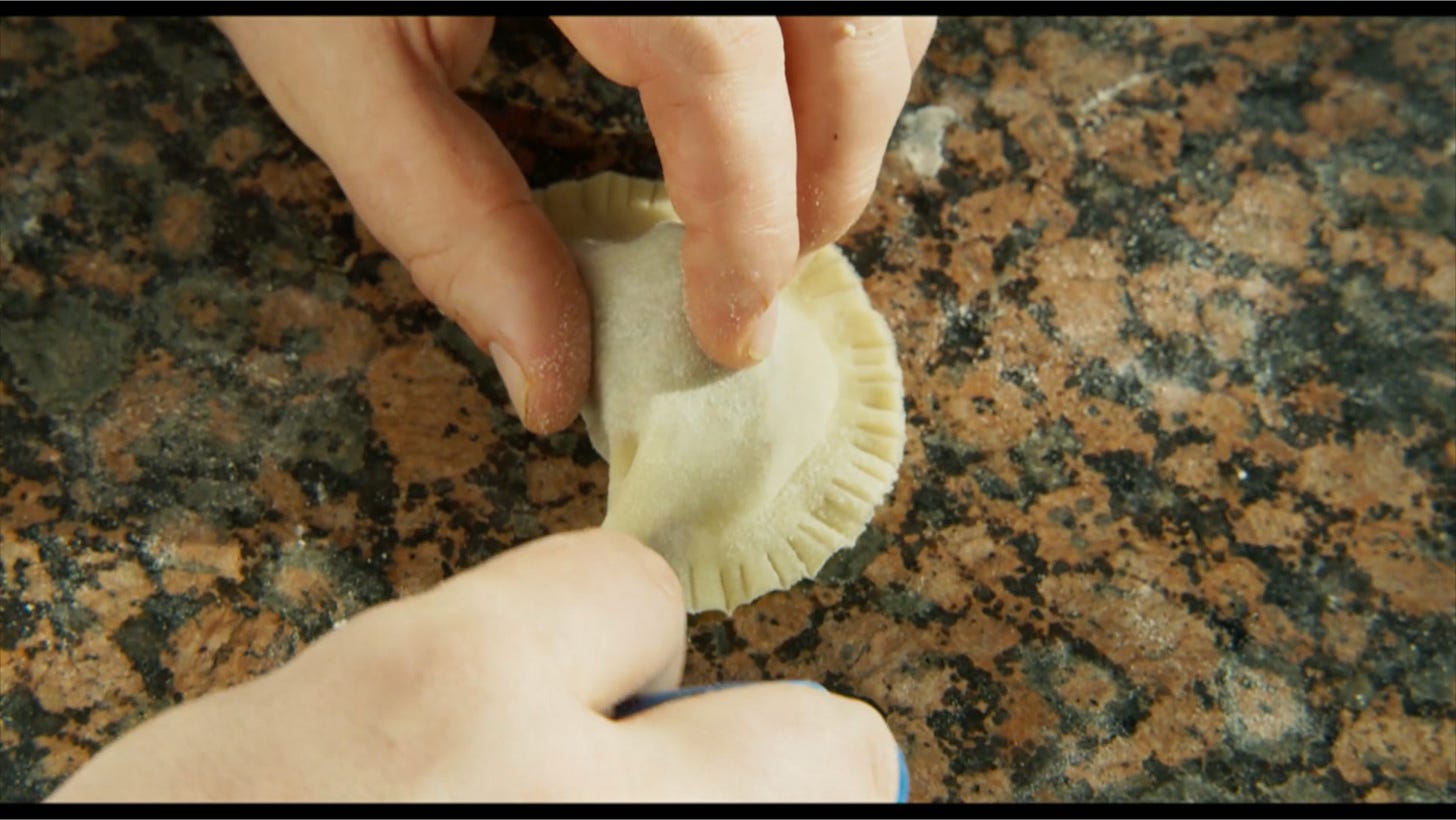Menus-Plaisirs - Les Troigros is a 4-hour documentary about the Troisgros family and their restaurants in central France. Directed by 93-year-old Frederick Wiseman, it's a triumph. The Michelin guide has awarded the French family three stars for 55 years, across four generations. They’re the elite of fine dining, filmed by the elite of cinema.
According to PBS (where you can stream it), “the film is about the artistry, ingenuity, and imagination that goes into creating and presenting meals of the highest quality.“ But that’s not what the movie is about. Not just because it’s nonsensical to talk about “meals of the highest quality” when you can’t taste them. Screens and distance are a true foodie’s nightmare.
This documentary is about the fascinating economy in which the Troisgros chefs operate. It’s about value chains, capital and labor, economic agents and their self-interested choices. If this sounds boring compared to the PBS description, I can assure you it’s not. (However, this could be another instance of me being a nerd about things. When I read Shoe Dog, Phil Knight’s chronicle of how he started Nike, I loved it because it was a fantastic book about working capital, not the inspirational memoir it's known as.)
Fine dining establishments are part of a complex chain of actors, assets, and transformations. It starts with the soils in the countryside around the restaurant and ends on the clients’ smartphones and social profiles. Throughout, individuals make choices reflecting their economic and sociological interests.
The film features individuals working the soil for value. Among them is a cattle farmer who uses a precise hand-moved watering system for proper irrigation and water conservation. He divides his fields into small parcels and lets cows graze one at a time to ensure regrowth of the grass in each. The young grass, sweet and soft, would be devoured if animals are brought back to it too soon, resulting in plant fatigue. He avoids over-grazing or plowing to prevent the release of trapped carbon dioxide.
At the vineyard, the winemaker planted vegetables (beans, radishes) around his vines to increase biodiversity without creating competition for water or sunlight, as their roots sit and are irrigated at different levels. He also keeps various trees, including fruit trees, to enrich the environment and add organic nutrients. Wine is about soil and weather before the kind of grape or the aging process.
Farmers must decide what finished product they want to sell when dealing with animals. The cattle farmer could sell whole carcasses, or butcher them himself and package items of a certain quality. He sees an opportunity to create semi-official product labels, similar to wine labels. The dairy farmer manages his goats’ gestation cycles precisely. His goal is to increase the yield of baby goats and milk. His unique strategy involves allowing breastfeeding at the beginning of a baby goat’s life for health benefits, then replacing it with cow milk bought from another farmer after a few weeks. He stores the goat milk for his own dairy products like cheese, which he can sell fresh (2-3 days old) or aged.
Cheese ripeners are their own ecosystem. They buy fresh or aged cheese and sell to other ripeners, restaurants, and consumers. Cheese can be eaten a few days old or aged for years. Their choices on buying, holding, and selling are based on market assessment and demand for specific products. For instance, more and more consumers are looking for 24- and 36-month-old comté cheese. The ripener admits they’re not the best texture-wise, but a premium for years of aging adds value to these items.
Throughout the film, I thought of William Cronon’s Nature’s Metropolis: Chicago and the Great West. The book describes how Chicago became a massive urban center in the second half of the 19th century and shaped the Midwest. Through marketplace mechanisms and commoditization, it became the focal point for producers using the city as their main exchange. From wood to grains and beef, they had to decide: sell the lumber from the trees on my land? Remove them to grow wheat and sell grain? Keep the grain to feed cows and offer those? Keep the animals to produce and sell milk? And make dairy products? The answer is based on economic agents turning their capital (land and forest) into capital (wheat fields) into capital (cattle) into capital (dairy farm) and selling its yield of commodities and products. Chicago saw the creation of interfaces and tools for producers and buyers such as grain elevators, contract futures, trade associations, commercial norms etc. It exemplified the critical relationship between urban centers and countrysides, essential for goods for commerce and city dwellers' consumption. Cronon demonstrates how Chicago was unearthed by its surrounding lands, becoming an economic force for the Midwest and the country’s connection between the Northeast and the Wild West.
Let’s head back to France and the busy kitchen at the Troisgros restaurant. Produce arrives and is accounted for daily. It's a place of transformation, from raw ingredients into the world’s most coveted meals. Though this is where the creative magic happens, it is also a process of loss. The staff monitors each order and preparation with precision. They weigh many of the ingredients, like pricey spices such as saffron (a gram fetches more than double-digit amounts) or the quantity of whipped cream on a dessert. They are careful not to be too generous with meats or seafood, to protect their unit economics. They get creative with food scraps. The meat in fish heads is used for tomato stuffing, which includes breadcrumbs and the pulp itself. When cutting pieces for a lamb recipe, extra bits (fat, bones) are collected, maybe to make stock. A chef asks a staff member to use only one sheet of plastic wrap when storing ingredients.
Limited prep can be done before orders come in, and then the kitchen becomes a just-in-time operation. Fine dining recipes involve a lot of work. The cooks need to prepare the components of a dish and ensure they are ready to plate and serve in sync. The temperatures and textures must be right at the same time.
Each dish requires a significant amount of work to help restaurants earn stars and enter fine dining, but it still has to be monitored and kept in check. Chefs need to ensure their staff can deliver during rush hour due to time constraints, striking the right balance between preparing in advance, executing during service, and creating amazing dishes. Every second counts. At the other end of the cooking spectrum, home cooks seek ways to spend less time preparing meals. Companies, from food conglomerates to retail chains and delivery apps, have helped consumers save time. As a result, we have innovative kitchen robots and ultra-processed food.
Time is a major economic issue for wines. The restaurant’s sommelier has to procure new bottles every year, making sure he gets his fair share from the best vineyards and updates his wine list. Prices have recently skyrocketed for the best vintages, so restaurants shell out significant amounts of cash to buy bottles that will be sold and consumed years later. This is the evergreen corporate issue of working capital: your money is tied up in bottles that you store before selling and getting cash flow. The sommelier confirms with clients, sometimes weeks in advance, that they’re committed to purchase and drink the wines. For the ones that cost up to five figures, this strains a restaurant’s liquidity.
The film proposes a reconciliation of labor and capital from farms to the restaurant. Both are on equal footing at every stage. The cattle farmer uses minimal machinery and takes good care of his land and animals. The cheese ripener gives salt scrubbings to his products and controls their storage temperature.
At the restaurant, the cooks are highly involved, as their labor determines the restaurant’s prestige. But at the same time, the place itself promotes the land: the architecture offers great views of the surroundings. Michel Troisgros aims to “work the country”: capital (the fruitful land) and labor (the skilled chefs) are in osmosis. Beyond fine dining, the reality is less balanced: a small number of conglomerates hold power over global producers and consumers. Financial capital is prioritized over nature, leading to deforestation, depletion of the seas, loss of biodiversity.
The waiting staff is the crucial link between the kitchen and the clients. They are briefed on each guest and are meticulous in explaining the extensive menu, while checking for allergies or dislikes. Substitutions are common. The restaurant offers separate menus for kids and teenagers. The documentary focuses on the clients, reflecting the restaurant’s dedication to them: providing a luxury hospitality experience that extends beyond the food quality. Some even get into “unreasonable hospitality” territory, which will be the subject of a later post.
Clients were once the last step in the value chain, but now they’re agents. They take pictures of the dishes and post on social media. The food leaves the restaurant, transformed again, with significant loss this time. The documentary features a customer - perhaps a food blogger - dining alone, holding his phone more than cutlery.
Other interesting dimensions stand out beyond the economics. The cooks’ craft is highlighted, with shots of their precise gestures to cut, shape, or place an ingredient. Thierry Marx, a famous French chef, draws inspiration from Musashi’s Book of Five Rings, a centuries-old Japanese martial arts guide that explains sword techniques, positioning and movement around the enemy. One scene features a chef showing another cook how to prepare eel fillets: make five-millimeter incisions into the fish meat, season with freshly ground black pepper, layer the fillets, and cut them into three portions. Quick, precise moves show mastery while saving time.
The dynamic between the father (Michel, head chef at the Troisgros restaurant, on the way to retirement), the big brother (César, incoming head chef), and the little brother (Léo, who heads his own restaurant and has a food truck) is special. In one scene, they discuss their menus and you can feel the seniority of each chef. Michel edits Léo’s recipes, pointing out there’s too much going on and recommends removing ingredients. César discusses what’s in season and which fish is best for a recipe. In another scene, Léo complains that he “hangs out too much” with his father and starts mirroring some of his mannerisms; “I don’t want to look like him”. After noticing overlap between the main restaurant’s menu and his, the little brother has to make changes, despite spending weeks refining his recipes.
The father-son relationship is one of love and tension because it mixes personal and professional expectations at the highest craft level, reminding me of Jiro Ono and Hayao Miyazaki’s relationships with their sons, who follow in their footsteps. The sushi master and the filmmaker critique their children’s work, expecting the best, while the sons feel they'll never match their fathers’ mastery. The documentaries show fathers and sons in their respective environments with minimal direct interaction. The comparison with the Troisgros family isn’t as incidental as it seems: there are strong cultural ties between France and Japan in cooking. Michel Troisgros was one of the first chefs to draw inspiration from Japanese cuisine, not widely accepted in French gastronomy at the time.
Hierarchy outside of the family is a conduit for savoir-faire, not authority. In rush hour, Michel notices the lamb brains prep wasn't optimal, leading to wasted time. He sits with the cook to review the proper method, referencing the Larousse encyclopedia and the Escoffier cookbook, both of which are common and easy to procure. Several times, he relies on his taste to adjust a dish’s recipe or presentation, not old traditions; only as a more accomplished cook when it comes to deciding what to do with a dish. The authority comes from decades of practice at the highest level and the humility to rely on basic knowledge taught in culinary school.
Traditions don't heavily influence culinary choices at Troisgros. The chefs have no problem breaking conventions. They create recipes like strawberry and caviar as an appetizer, fried kidneys, passion fruit and sriracha as a main dish, and even serving salmon. They also offer a house champagne with homegrown Sichuan peppercorns in each glass.
The film has no voiceover. The chefs act as interviewers when they talk to their producers, and the clients do the same with the restaurant’s staff. The cameras are filming, but they’re able to disappear at most times. Wiseman’s genius is in the editing, capturing the looks and pauses, the lights and frames. A gem of a movie and a journey through the economic universe of fine dining.

